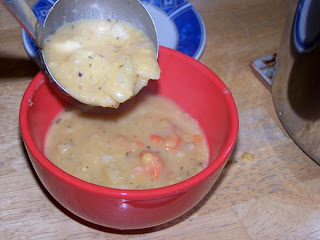When I lived in Vermont, a coworker who was Mormon told me that part of the regular practice of Mormons was to keep 6 months of food available per family at all times. Perhaps a reflection of the difficult times they experienced in the early years after the trek to Utah?
While we shouldn't be pulling down our barns to build bigger ones, the idea of providing for a rainy day is plain common sense. On a farm, we would expect to can, put things in the root cellar, etc. Well, city dwellers need to do the equivalent. My family has always stored a good amount of non-perishables: rice, pasta, dried beans, etc. Anyway, take a look at the beginning of Bob's post below and give it some thought.
How much food is a year's supply for a family of four?
When starting a food storage program for your family, the most critical thing is to know how much food your family eats in a year. If you are going to store what you eat, and eat what you store, the first step is observation of your own kitchen.
But to give an idea as to what this could involve. . . I went to the governments My Pyramid site which describes their recommended daily consumptions of the various food groups (vegetables, fruits, oils, dairy, protein, grains). They have different recommendations for men and women, boys and girls of various ages. The plan below is based on a family of four -- a mother and father, a teenage boy age 14-18, and a young child age 4-8.
I don't know that anyone actually eats to the government recommendations, or even if that is a good idea, since government diet recommendations are heavily influenced by politics. So I caution folks against following these amounts without doing research into what your family actually eats.
With those caveats, however. . . here it is. . .
Veggies 2,084 15 oz cans
Grains 593 lbs
Fruits 1,564 15 oz cans
oils 12 gallons
dairy 251 gallons
peanut butter 13 quarts
nuts 13 lbs
beans 268 lbs
eggs 67 doz eggs
meat/poultry/fish 226 lbs
Using Oklahoma City supermarket prices, except for the meat which I priced at the levels prevailing in the Oklahoma Food cooperative. . . the price if bought all at once would be $5,453 plus sales tax, or $454/month. The dairy I priced as bulk powdered milk.
Visit Bobaganda for the rest.



